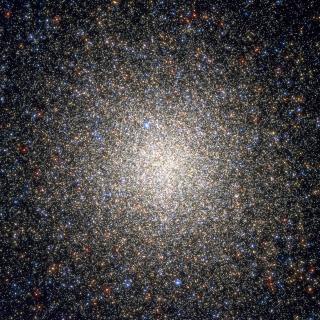Bibcode
Milone, A. P.; Marino, A. F.; Cassisi, S.; Piotto, G.; Bedin, L. R.; Anderson, J.; Allard, F.; Aparicio, A.; Bellini, A.; Buonanno, R.; Monelli, M.; Pietrinferni, A.
Referencia bibliográfica
The Astrophysical Journal Letters, Volume 754, Issue 2, article id. L34 (2012).
Fecha de publicación:
8
2012
Número de citas
69
Número de citas referidas
59
Descripción
We use images taken with the infrared channel of the Wide Field Camera 3
on the Hubble Space Telescope to study the multiple main sequences (MSs)
of NGC 2808. Below the turnoff, the red, the middle, and the blue MS,
previously detected from visual-band photometry, are visible over an
interval of about 3.5 F160W magnitudes. The three MSs merge together at
the level of the MS bend. At fainter magnitudes, the MS again splits
into two components containing ~65% and ~35% of stars, with the
most-populated MS being the bluest one. Theoretical isochrones suggest
that the latter is connected to the red MS discovered in the optical
color-magnitude diagram (CMD) and hence corresponds to the first stellar
generation, having primordial helium and enhanced carbon and oxygen
abundances. The less-populated MS in the faint part of the near-IR CMD
is helium-rich and poor in carbon and oxygen, and it can be associated
with the middle and the blue MS of the optical CMD. The finding that the
photometric signature of abundance anti-correlation is also present in
fully convective MS stars reinforces the inference that they have a
primordial origin.
Based on observations with the NASA/ESA Hubble Space Telescope, obtained
at the Space Telescope Science Institute, which is operated by AURA,
Inc., under NASA contract NAS 5-26555.
Proyectos relacionados

Vía Láctea y galaxias cercanas
El objetivo general del Proyecto es el estudio de la estructura, historia evolutiva y proceso de formación de galaxias a través de sus poblaciones estelares resueltas, tanto a partir de fotometría como espectroscopia. El proyecto puede dividirse en cuatro líneas principales: I. Historia de formación estelar en el Grupo Local. El objetivo de esta
Martín
López Corredoira